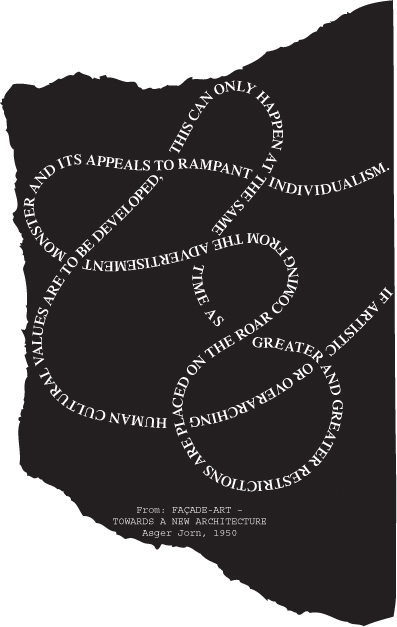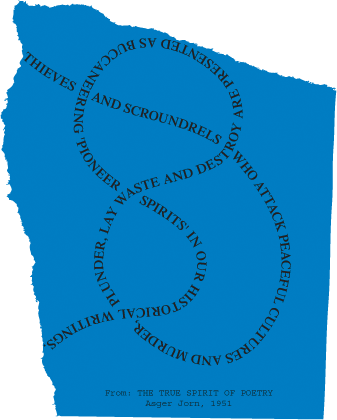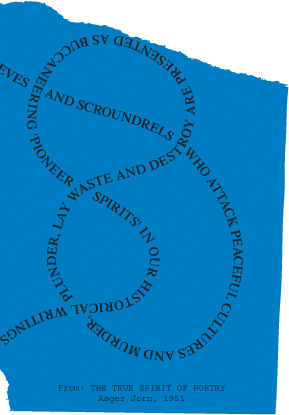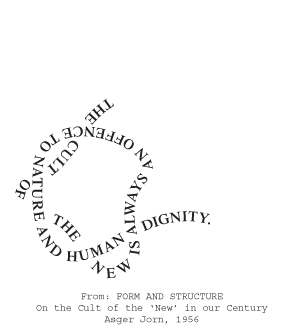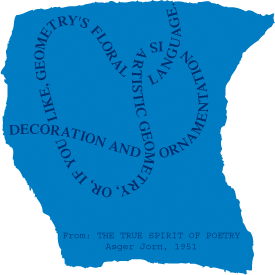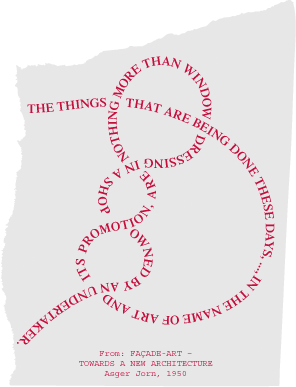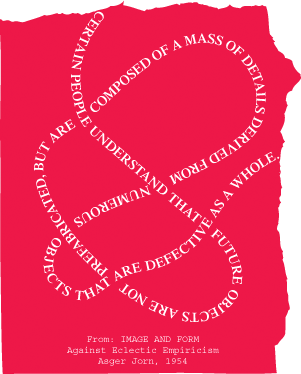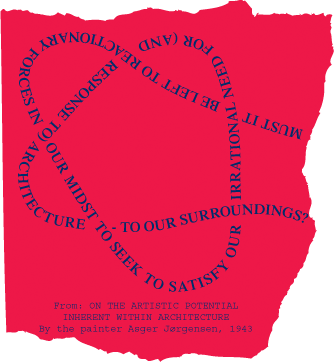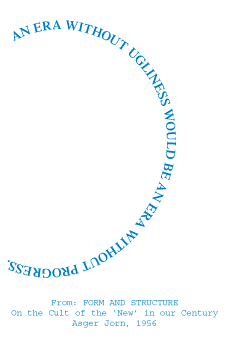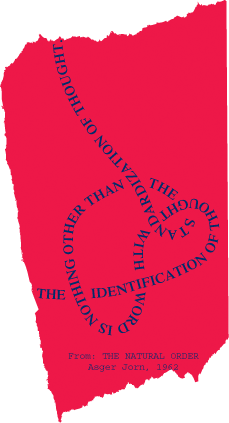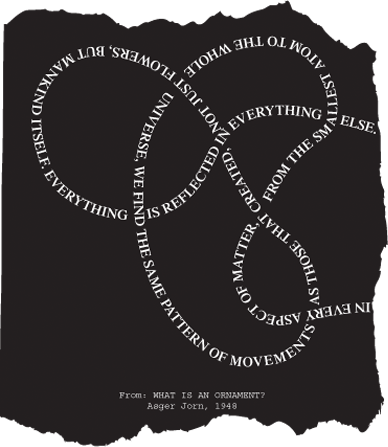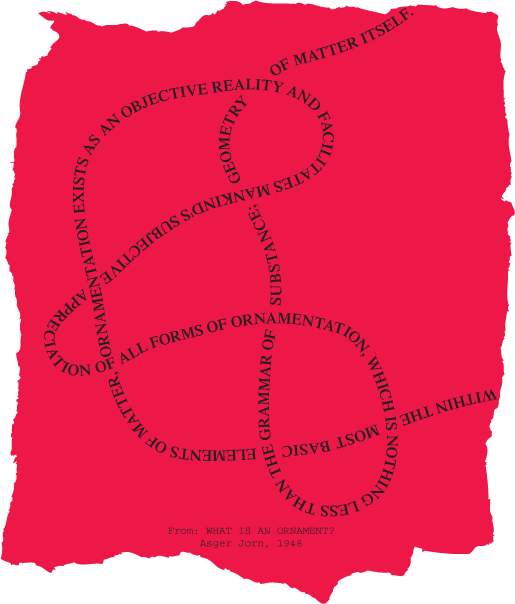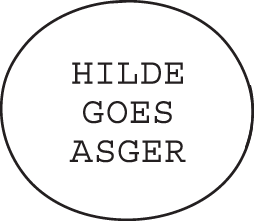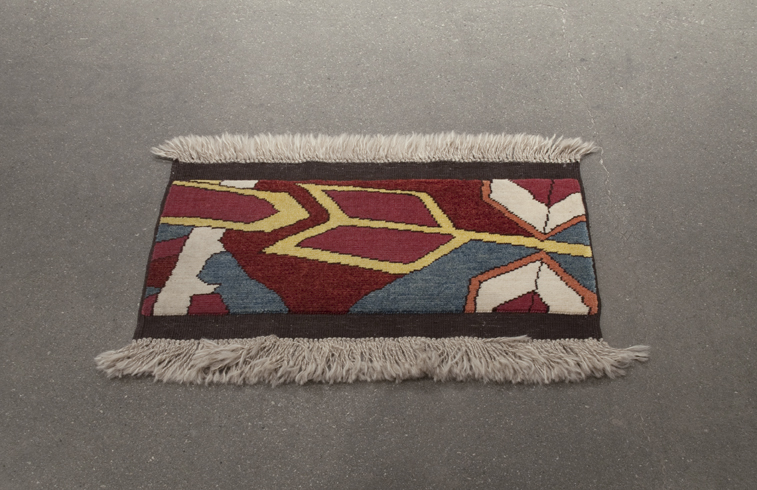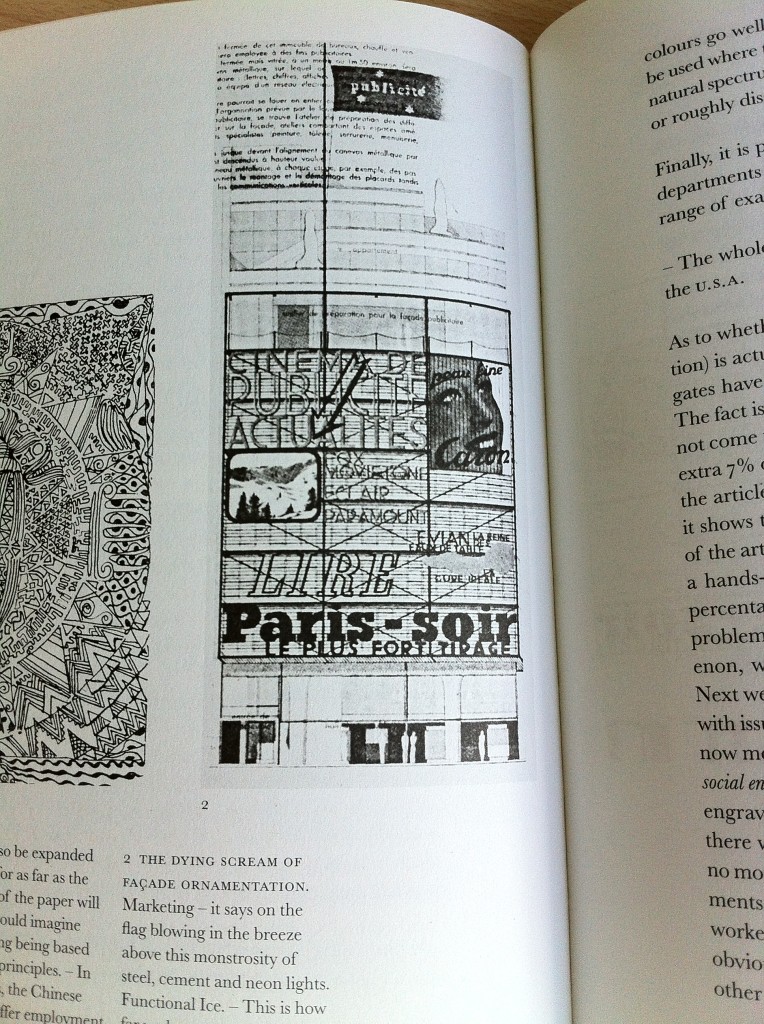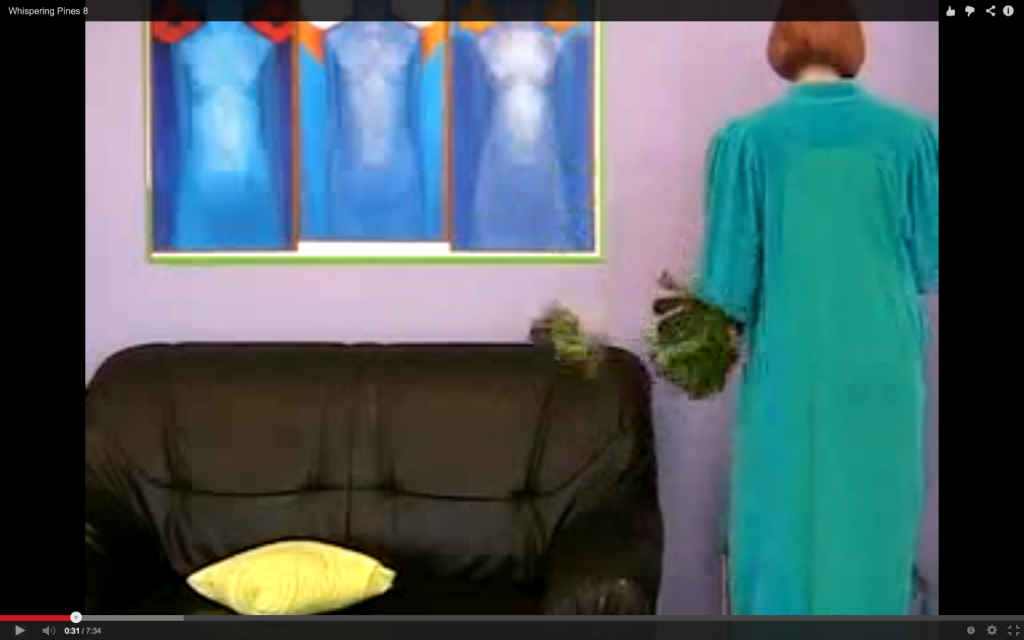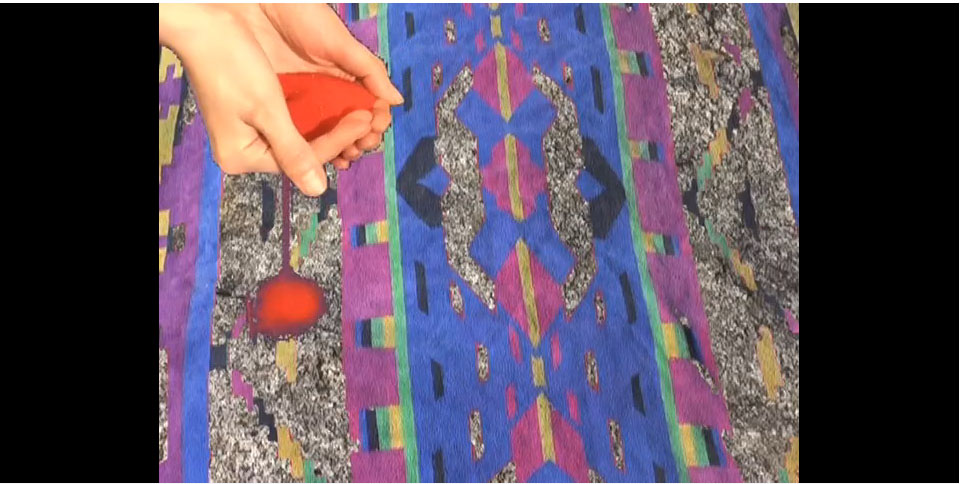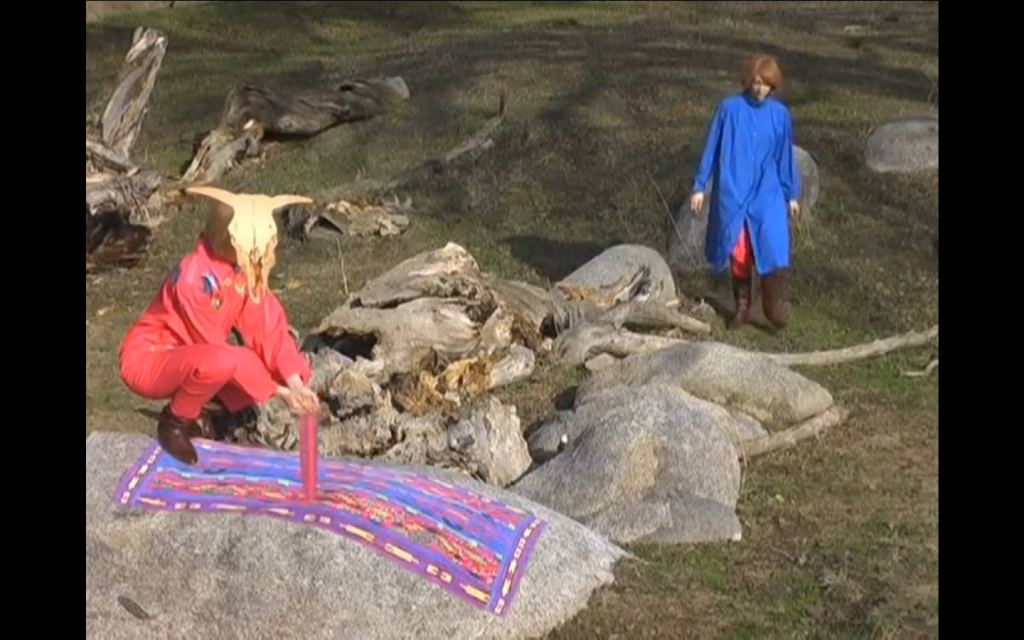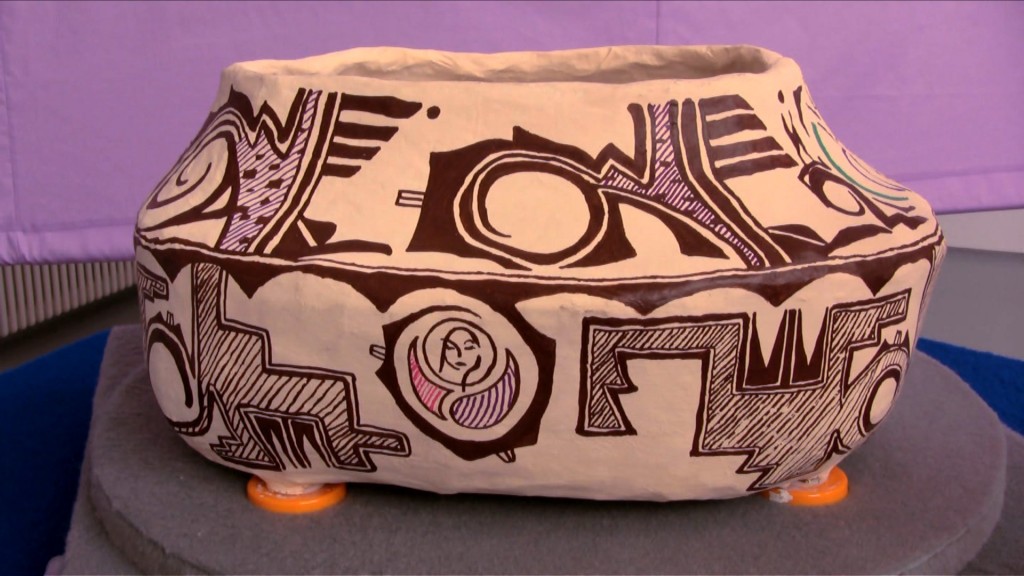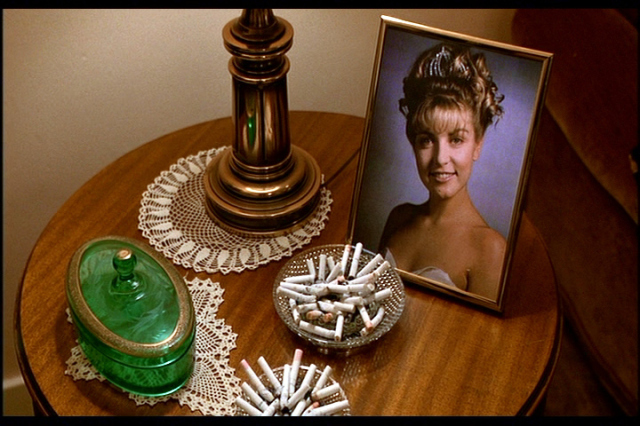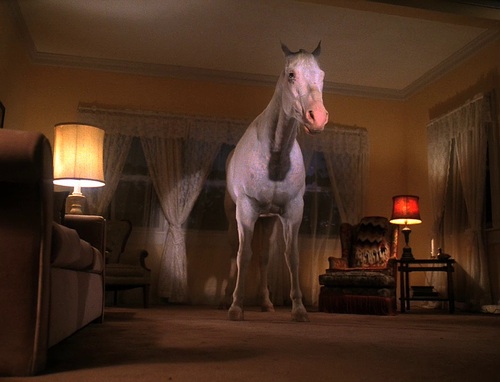THE GRAMMAR OF SUBSTANCE (II)
Within the framework of my research into Asger Jorn´s writing and thinking I organize public sessions with special guests at a variety of venues. The guest´s practice, knowledge, insights, or responses are informative to my research, or steer the direction I take on a particular topic. The sessions also often respond to the context of the hosting institution, or to a specific request. Making the sessions public is a way to share and enter into a dialogue with the audiences.
‘The Grammar of Substance’ was a talk by Canadian artist Shannon Bool (lives and works in Berlin) and myself in the framework of the exhibition ‘Shana Moulton – episodes from Whispering Pines’ at Nieuwe Vide, Haarlem. The talk took place on Sunday 16 March 2014. In the blog entry ‘The Grammar of Substance I’ you will find a brief description of Jorn’s text ‘What is an ornament?’ (1948). In her contribution to the talk, Shannon Bool looked at this text from the perspective of the discussion of high and low of in the late 1940’s, and then makes the jump to today, where “Jorn’s categories of ornamentation have merged and artistic strategies require the skills to extract ornamentation from functionality.” Bool also specifically discussed Shana Moulton’s strategy of synthesizing contemporary banality, and specific objects as “escape routes” or catalysts.
Style Confusion and the Psychology of Hoarding
What is most striking to me about Jorn’s text ‘What is an Ornament’? is the way that the text seeks to define ornament from a descriptive or functional viewpoint, but outlines a more universal, or even cosmological description of how ornament pervades the natural world, on the level of physics, wavelengths, and geography. It encompasses both macroscopic and microscopic examples of natural phenomena that act as a sort of blueprint for the human’s need to ornament.
I am an artist who works with some specific aspects and examples of ornamentation, often by subverting the context of cultural information or using unlikely material processes to paradoxically take a deeper reading into surface). Hence, I am primarily interested in some of the ways that Jorn focuses more on the idea of ornament as a way of existing in the world (i.e. his definition of a materialist artist) rather than an anti-modernist defense of specific ornamental forms. It also interests me to see how Jorn takes a probing look at some of the pitfalls of the functionalism of his time. In this respect, he takes a broader, sociopolitical look at the development of functionalism as the downfall of ornament and uses the birth of modernism, or the period just before WWI and outlines a Style Confusion Period as paving the road for functionalism.
I am struck by Jorn’s discussion of “style confusion”, his critique of the multitude of “isms” that emerge in the post war period “cubism, fauvism, futurism” etc, and how he views the avant-garde as inauthentic. He credits the increasing tempo of avant-garde movements in creating a permanent conflict with spontaneous arabesque forms that culminates into the dead end of functionalism. This is an interesting point when one thinks of the “spontaneous arabesque” forms that the avant-garde utilized or even props of these movements. For example the collection and appropriation of ‘primitive’ forms (such as harnessing the energy of primitive masks in cubism), primitive impulses (embracing the transformative energies of war and destruction in futurism) and primitive behaviors (as in “going native” in Fauvism).
As I will later point out, this aspect of appropriating spontaneous arabesque is reflected in contemporary use of ornament, just as original sources are explored, or emptied out consumerist examples are explored. This is also a very present aspect in the video works of Shana Moulton.
In ‘What is an Ornament?’, Jorn outlines in functionalism: “Instead of placing emphasis on the actual function of an object, the functionalists became more concerned with the definition of function, instead of placing emphasis on getting things to actually function, more importance was placed on purely exterior matters-to be able to demonstrate exactly how objects functioned. Functionalists saw the demonstration of an object’s function as being synonymous with the object’s beauty and, thus, the object’s practical aesthetic became the most thoroughly applied rationalistic aesthetic that had ever seen the light of day in the history of mankind.”
Then Jorn indicates how functionalism misunderstood the problem: “The functionalists bade adieu to the style confusion syndrome by apparently distancing themselves from any conscious attempts at creating styles and techniques. They accepted the fact that it is impossible to set out deliberately to develop a particular style. Style is something that emerges naturally. It must be allowed to emerge naturally. That’s why the functionalists forgot all about style, because of this quite correct approach, the functionalist style then emerged. But what kind of style was it?”
Here Jorn describes the crisis of surface decoration that occurs around the birth of modernism. For me, an interesting aspect of functionalism is precisely this avoidance of style, which places then almost fetishistic focus on certain surfaces, which are not per se “decorative” but carry a tremendous psychological weight. It is almost as if an avoidance of what is “primitive”, or any remnants of “spontaneous arabesque” results in an even more atavistic reality.
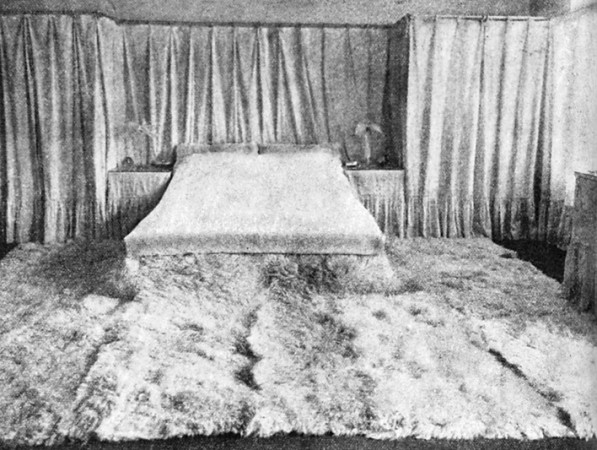
Adolf Loos, 'Schlafzimmer meiner Frau: Weisse Tünche, weisse Vorhänge, weisse Angorafelle', 1903. Photographer unknown.
My favorite example of this is an anonymous photo that was taken in 1903 of the room that Adolf Loos designed for his new wife Lena in the apartment that he completely renovated before they were married. The photo, which can only be found in low quality in an Art periodical from Vienna of that year, is titled: “Schlafzimmer meiner Frau: Weisse Tünche, weisse Vorhänge, weisse Angorafelle.” It shows a room completely devoid of furniture or decoration, covered in white materials.
Most strikingly, an angora carpet covers the floor of the room and culminates between the beds two mattresses. The room is a great example of how avoidance of decoration can create atmospheric effects that parallel those of Jorn’s “spontaneous arabesque”, in a sort of identification with and empathy towards a constructed space. This space is intended to precisely reflect an inner, organic experience just as “spontaneous arabesque” emerges from an attunement to nature, or from “life’s intrinsic patterns” as Jorn deems.
While I understand Jorn’s resistance to the functionalist’s agenda of counter ornamental purification, I can also conclude that at the time his essay was written (1948), many examples of its functionalism can be viewed as decorative today. Looking at this image more than six decades later, it could strike us as decorative, as sort of an adaptation of spontaneous arabesque, because of subtle details such as the sweetness of old fonts, or even the nostalgia they deliver.
My point is that where Jorn leaves us in 1948, functionalism evolves into several styles (Postwar practicalism, Scandinavian minimalism with a focus on natural materials, and then the bright colourful explosion of Italian functionalism. I believe, alternatively, that in it’s most basic sense, functionalism provided us with a perfect shell to be slowly filled with the abounding consumerism, mass media and an overwhelming amount of ornamentation which has been appropriated, sampled and referenced from original sources and for the most part, emptied out of its original contents.
The caption Jorn provides reads: “THE DYING SCREAM OF FACADE ORNAMENTATION. Marketing – it says on the flag blowing in the breeze above this monstrosity of steel, cement, and neon lights. Functional Ice. – This is how far we have gone with our ‘rational’ exploitation of the facade. This is how low we have sunk in terms of artistic culture.”
In a contemporary context, there are a few examples of the power of focusing on inanimate objects, displays and ornaments, where they are given agency that doesn’t bring us as viewers to the returned innocence of “spontaneous arabesque”. It rather brings us to a more contemporary version of materialism which balances the cosmology of spontaneous arabesque with an ironic distance or skepticism of consumerism. The examples I would like to briefly outline are in Shana Moulton’s videos, in David Lynch’s TV series ‘Twin Peaks’ and in a few brief examples of the films of Douglas Sirk. I would like to title these examples:
The Psychology of Hoarding Spontaneous Arabesques
In Shana Moulton’s videos, the character of Cynthia surrounds herself with knick knacks in a domestic setting that range from the holy artifacts to the most mundane thrift store finds. The passage of time has almost equalised the auras and symbolic values of these references. For example, in ‘Whispering Pines #4′ Cynthia’s setting features a copy of Mondrian’s evolution tryptic, which in this setting, hanging over a banal eighties leather sofa, looks like decoration for a medical office.
Cynthia herself, wears a housedress normally worn by women over 65 who can be found in the deepest, darkest realms of domesticity. Cynthia’s housedress however, matches her to Mondrian’s channelling and enlightened figures. This non-hierarchal choreography forms a world where Cynthia can attempt to balance the overempathic activity of her senses. This balance ruptures into ecstatic moments when she emphathises with what we could call the “spontaneous arabesque” of certain materials or objects.
In the contemporary mix-mash of powerful symbols mixed with emptied out consumerism, Cynthia even subverts the functionality of prosthetic devices and wellness knick knacks. She uses them as raw material to build objects which emulate the earnest origins of „spontaneous arabesque“, such as a ceremonial staff she builds from massage tools and brings to ‘The Antiques Roadshow’ in ‘Whispering Pines #4′.
Other mundane objects are used in rituals that seem to balance Cynthia or lend her healing powers. In another video, ‘Sand Saga’, decorative sand, an ingredient bought in craft stores mostly to make simple candles or pour in layers into a glass is diverted by Cynthia’s higher power creature. The creature makes a sandpainting of a reproduction of a navajo blanket, that Cynthia lies on and receives a healing session, where her higher self uses a pseudo-modernist knick knack to cleans her chakras.
There is perhaps a critique here: everything references the earnest roots of indigenous healing, but symbols and ceremonies are improvised and misguided through the outsourced nature of Cynthia’s objects. She doesn’t quite understand her surroundings that she so deeply identifies with, referring back to Jorn’s idea that “(…) the materialist acknowledges that as a human being he is part of the materials and substances and can not be separated from nature (…)”.
I am lead to what one can read as Cynthia’s existentialism; her inability to separate herself from her surroundings due to her vast reserves of empathy that she seems to recharge herself with when she connects to them. In ‘Whispering Pines #9′, this culminates in her mistaking her Avon Foot bath with a valuable Zuni Vase and even making a trip to the Antiques Roadshow herself. In the end, she takes solace in the object’s absurd healing functionality and literally regenerates herself with a footbath.
When getting to know Cynthia, Moulton’s portrayal of her inability to separate from, or to use the objects of a mise-en-scene as catalysts of affect, can be linked to two references: David Lynch’s ‘Twin Peaks’ and the films of Douglas Sirk.
In relation to Jorn’s ideas of not separating with nature and “spontaneous arabesque” (and a materialist identification with nature), it is almost as if the contemporary impossibility of being “natural” becomes a point of stress or trauma. The quirkiness of ‘Twin Peaks’ is also, like Cynthia’s world, initiated by characters who over-emphathize with inanimate objects (such as the lady of the log), or painstakingly hyper decorated sets which have the opposite effect of Cynthia’s surroundings, as they communicate a subtle doom, but this doom seems to correlate to Cynthia’s new age sensibility. In points of crisis, the activation of setting and ornaments that inhabit it are activated to show this dark imbalance. For example, in ‘Twin Peaks’, episode 14, a brilliant long pan is used to show the suffocating atmosphere of the knick knacks and ornaments of the Palmer Family’s living room which culminates in the murdered Laura Palmer’s cousin Maddy (played by the same actress who wears a brunette wig) announcing her need to leave Twin Peaks.
Later in the episode we return to the living room, where Mrs. Palmer has been drugged by Mr. Palmer (possessed by Killer Bob). The living room becomes a platform for the invocation of the Pale Horse.
The following scene has Maddy murdered in the same living room. The final blow is delivered when she is thrown headfirst into the pastoral painting that the living room scene begins with. Here is Mrs. Palmer, the quintessential existential housewife, trapped in her domestic reality, like Cynthia, but without any new age healing mechanisms.
Like Cynthia, the characters in ‘Twin Peaks’ almost psychically bond with their synthetic environments and artifice evokes empathy. A post-Jorn reading of this, could connect the environment of Twin Peaks, and of Cynthia’s interior contructions, as attempts to balance multitudes of reference, to create a sort of universe where the unbalanced patterns of nature are renegotiated.
Perhaps one of the greatest figures who activated the sensibility of “unnaturalness” is the filmmaker Douglas Sirk, whose films were made not long after Jorn’s text was written. Here the film theorist Tom Ryan writes about Sirk’s use of set:
“Most compellingly of all, forces of repression are signalled through Sirk’s imagery. In his work, mise en scène is as crucial to meaning as narrative form, his often baroque visual style pointing to the ways in which human aspiration is largely determined by the tenor of its surroundings. Homes that are supposed to be havens start to look like prisons as the decor comes to dominate the compositions. Objects that are supposed to be items of support actually seem to be taking over the characters’ lives. Their traumas become the logical extensions of the workings of the world around them.” See also http://filmstudiesforfree.blogspot.nl/2010/09/in-authenticity-douglas-sirk-and.html
In Sirk’s film ‘All that Heaven Allows’ a rich widow (also wearing an existential housedress) tells her spoiled, materialist children that she plans to marry her bohemian gardener.
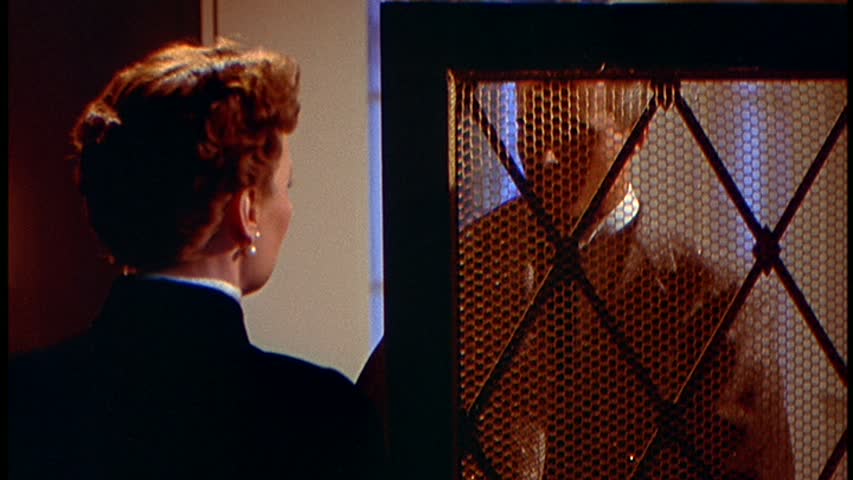
Douglas Sirk, ´All that Heaven Allows´, still. A paravent dividing mother and son resembles a prison.
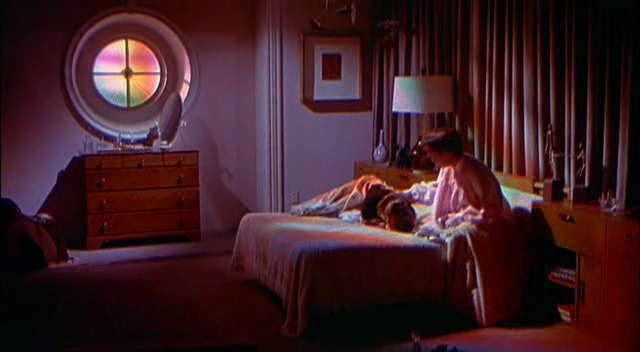
Douglas Sirk, 'All that Heaven Allows', still. The daughter’s bedroom, features a pre-new age window that channels light into a prism. But instead of providing healing properties, the prism’s colourful lights are projected onto the characters and illuminate their misery in a colorful rainbow.
Like Cynthia’s charged settings, Sirk invokes the power of decoration from the point of view of imbalance, of the impossibility of an authentic “materialist” reality, but how aspects of “spontaneous arabesque” can be channeled into novel catalysts of affect.
Shannon Bool
